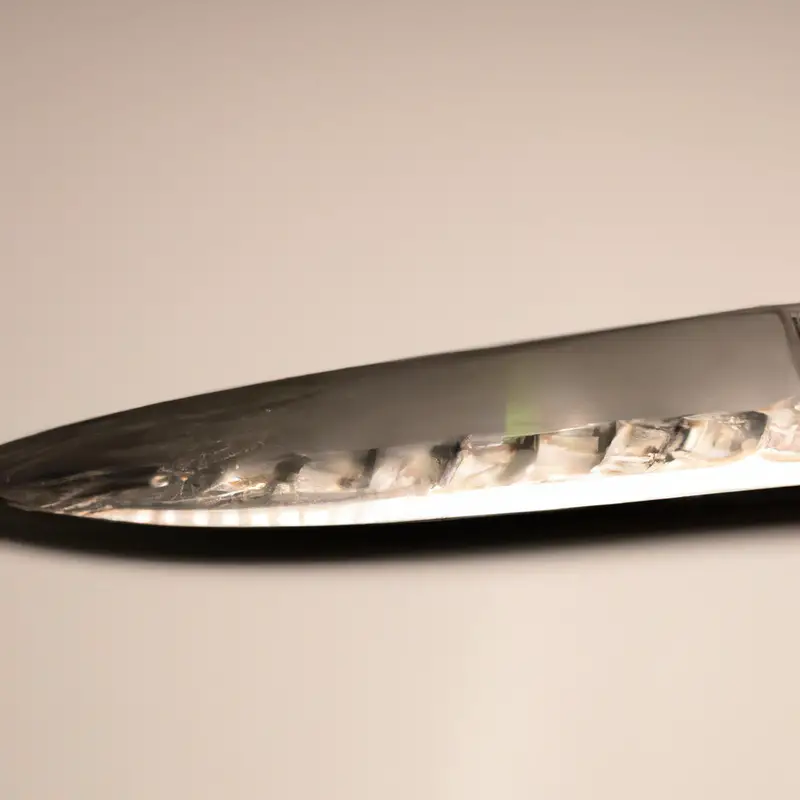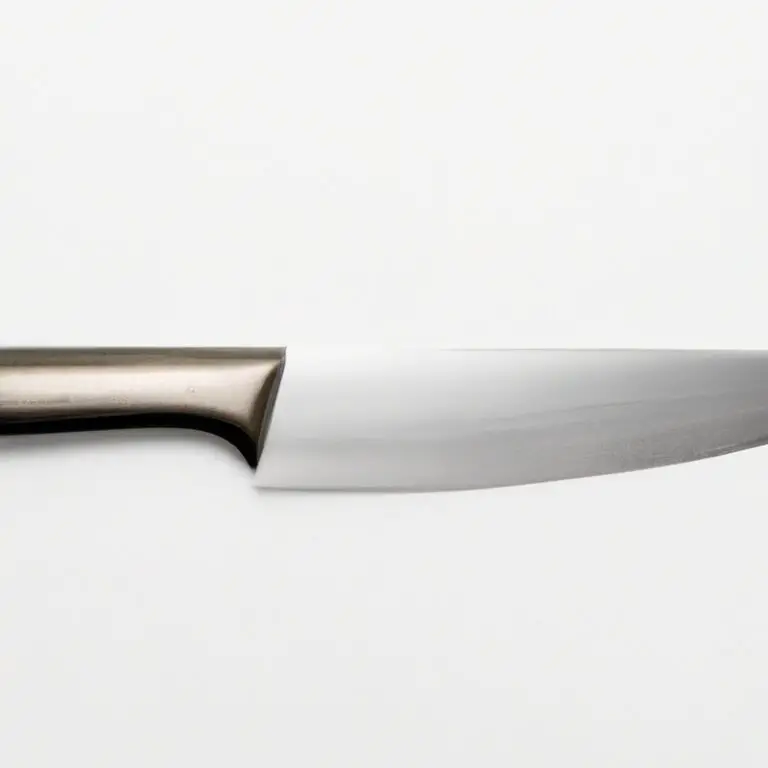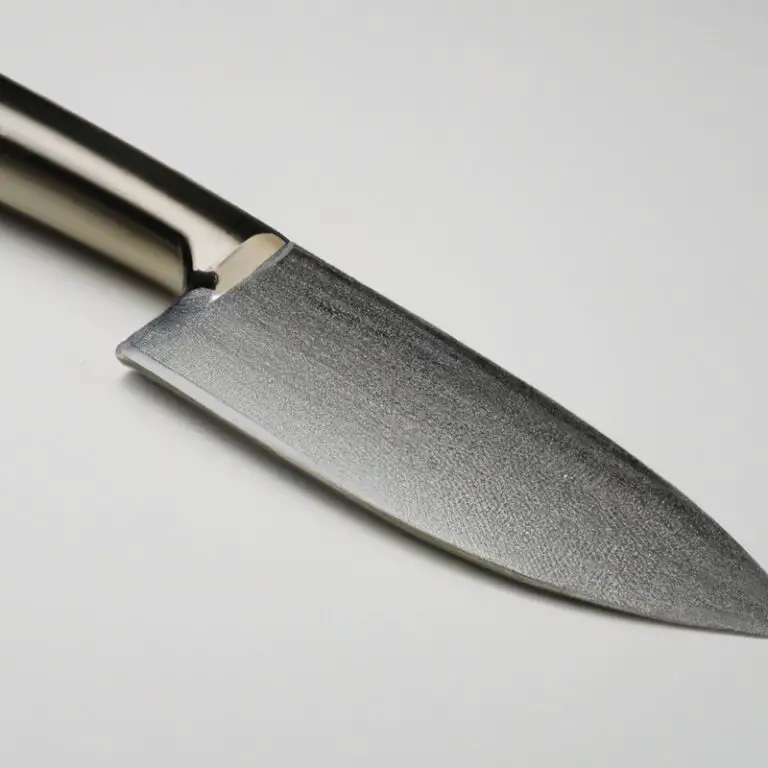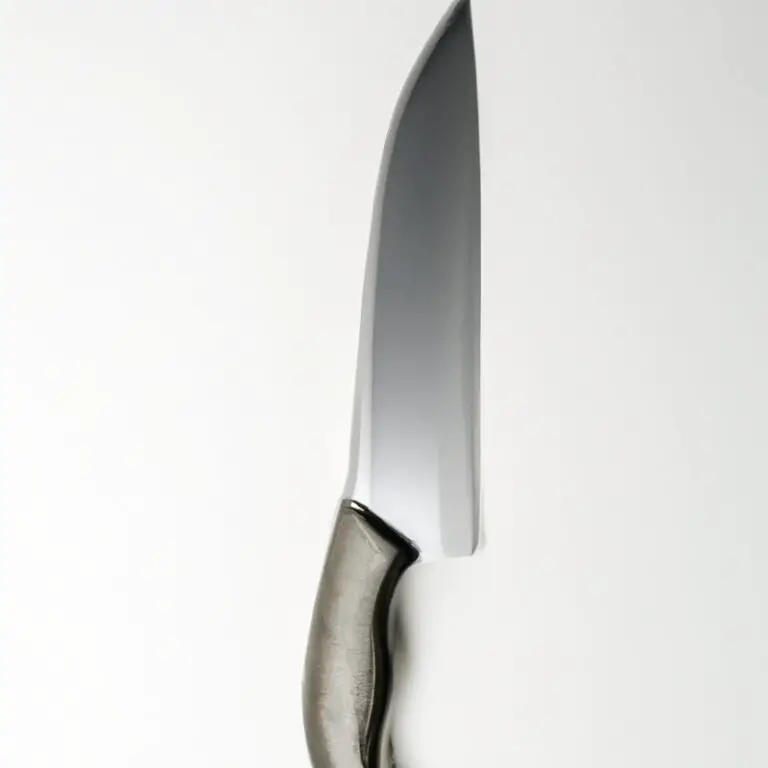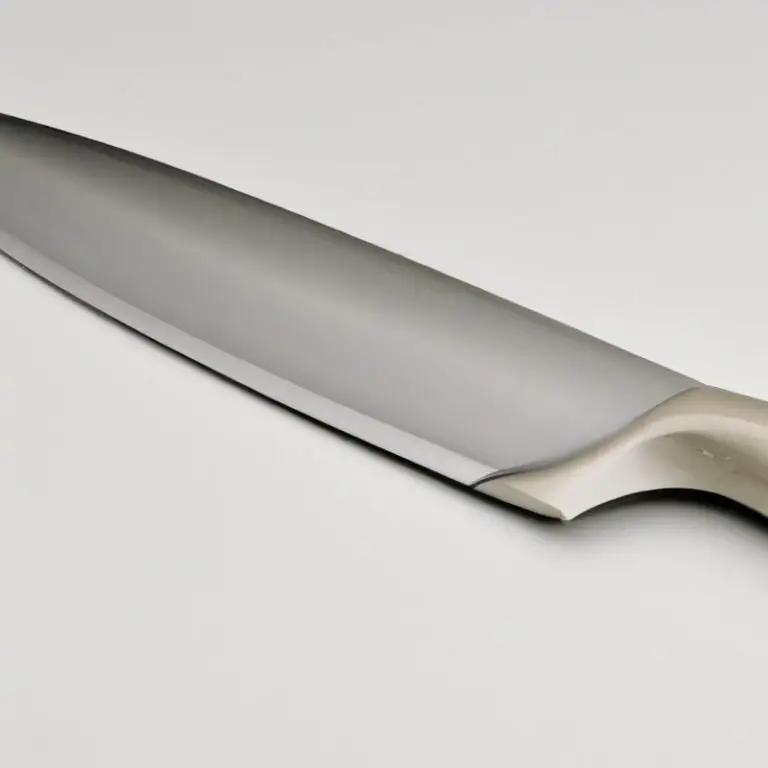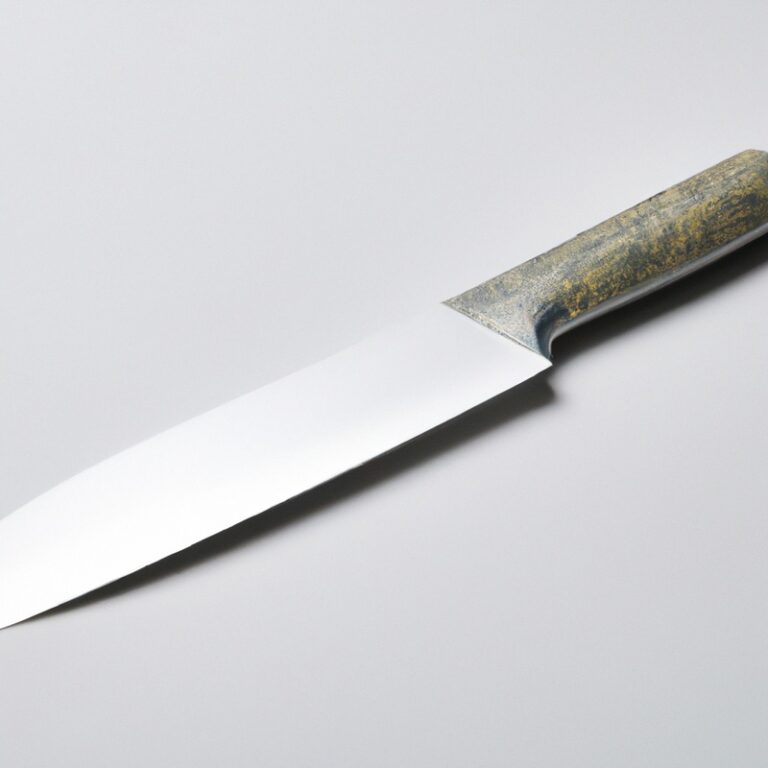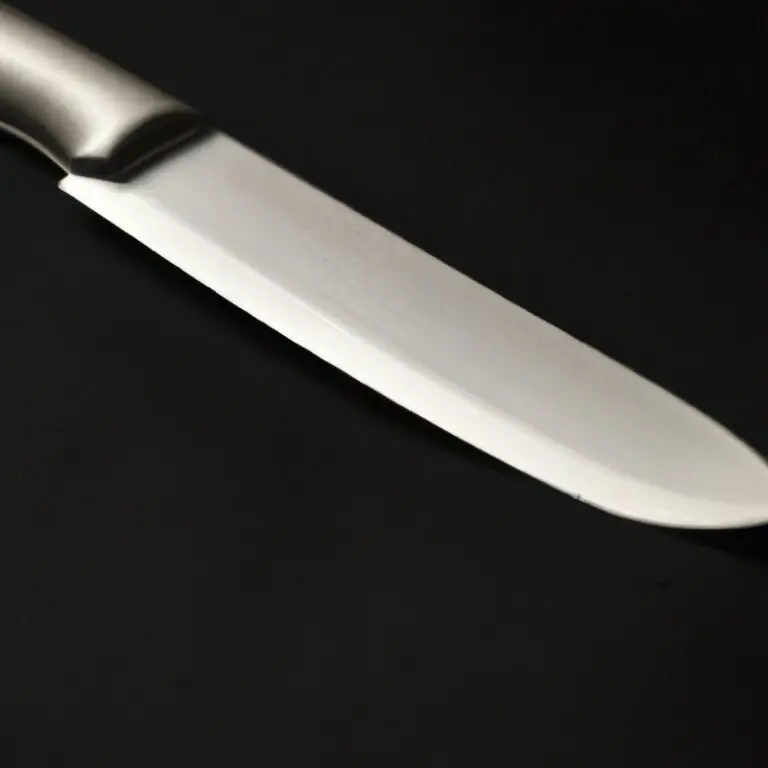What Are The Recommended Cutting Techniques For a Gyuto Knife? Master Chef Level!
Key Takeaways:
- A Gyuto knife is a versatile and popular kitchen tool that requires specific cutting techniques to ensure optimal performance and longevity.
- Recommended cutting techniques for a Gyuto knife involve using a sharp blade, proper grip, and a slicing motion to achieve precision and control.
- When using a Gyuto knife, it’s essential to practice safe handling and maintenance, including regular sharpening and honing.
- By mastering the recommended cutting techniques for a Gyuto knife, you can enhance your cooking experience and create delicious, professional-grade dishes with ease.
If you are a fan of Japanese cuisine, you’ve probably heard of Gyuto knives. They are preferred by many chefs for their versatility and precision.
However, owning a Gyuto knife is not enough, you also need to master the proper techniques to get the most out of this amazing knife.
In this article, I’ll guide you through the recommended cutting techniques for a Gyuto knife, including the best practices for slicing vegetables, meat, and herbs. I’ll also share with you tips on how to maintain the sharpness of your Gyuto knife and common mistakes to avoid while using this kitchen essential.
| Cutting Technique | Description |
|---|---|
| Push Cut | Pushing the blade forward in a straight direction while keeping the edge in contact with the ingredient. |
| Rocking Cut | Rocking the blade back and forth to make a curved motion while keeping the tip of the blade in contact with the ingredient. |
| Chop Cut | Chopping down on the ingredient from above, using a downward force to cut through it. |
| Slice Cut | Sliding the blade back and forth in a sawing motion while keeping the edge in contact with the ingredient. |
The Anatomy of a Gyuto Knife: Understanding the Structure and Materials
To understand the recommended cutting techniques for a Gyuto knife, it’s important to understand the knife’s anatomy and materials. A typical Gyuto knife has a blade length that ranges from 8 to 10 inches, a blade height that measures around 2 inches at the heel, and a thin and sharp blade with a double-bevel edge.
The blade is made from high-carbon steel, stainless steel, or a combination of both.
High-carbon steel is harder and holds a sharper edge, but it’s also more prone to rusting and requires more maintenance. On the other hand, stainless steel is more resistant to rust and stains, but it’s not as hard as high-carbon steel.
The handle of a Gyuto knife is usually made from wood, plastic, or composite materials.
Wood handles provide a comfortable grip and a traditional look. Plastic and composite handle materials offer durability and ease of maintenance.
Overall, a Gyuto knife’s structure and materials are designed to create a versatile and durable knife that can handle various cutting tasks in the kitchen.
Understanding these features can help you choose the right cutting techniques for your Gyuto knife and maintain its quality for long-term use.
The Importance of Choosing the Right Cutting Board for Gyuto Knives
Choosing the right cutting board for your Gyuto knife is crucial for ensuring it stays sharp and in good condition for long. The right cutting board should be made of materials that won’t dull the knife’s blade quickly.
Hardwood and bamboo cutting boards are the best options as they are durable, non-porous, and gentle on the knife’s edge.
Avoid using cutting boards made of glass, marble, ceramic, or metal as they can quickly damage your knife’s fine edge. Also, ensure that the cutting board is sturdy enough to prevent any wobbling or movement during use, which increases the risk of injury.
Always match your Gyuto knife’s size to the cutting board’s size to ensure stability and precision while cutting.
Cutting Techniques for Slicing Vegetables with Gyuto Knives
When it comes to slicing vegetables with a Gyuto knife, the key is to use a forward slicing motion rather than a chopping motion. Start by placing the blade of the knife on the top of the vegetable and applying slow, gentle pressure as you push the blade forward and down through the vegetable.
It’s important to keep your fingers curled under and away from the blade to avoid any accidental cuts.
Use a smooth and consistent motion to ensure even slices, and repeat until you have sliced through the entire vegetable. For larger vegetables, such as onions or eggplants, it may be helpful to slice them in half first before slicing them into thinner pieces.
Remember to always take your time and be mindful of your technique to ensure the best results.
The Proper Technique for Achieving Perfect Slices of Meat with a Gyuto Knife
To achieve perfect slices of meat with a Gyuto knife, it’s essential to follow the right technique. First, choose the right Gyuto knife for the job.
Ensure that the blade is sharp and in good condition before use.
Next, hold the meat with your non-dominant hand and make a small incision with the tip of the knife. Then, using a smooth back and forth motion, slice the meat across the grain in even strokes.
Avoid sawing or hacking, as it can crush the meat fibers.
When slicing, use the entire length of the blade and apply even pressure to create clean, precise cuts. Always keep your fingers tucked in safely and use a steady motion for consistency.
Finally, always clean the blade after each use and store the knife safely.
A properly cared for Gyuto knife can last a lifetime and provide perfect slices of meat every time.
How to Dice Vegetables with a Gyuto Knife for Consistent and Uniform Cuts
To dice vegetables with a Gyuto knife for consistent and uniform cuts, start by selecting vegetables that are uniform in size. Wash and dry them thoroughly before cutting.
Next, use a pinch grip to hold the knife and place the tip of the blade on the cutting board.
With a rocking motion, cut off the top and bottom of the vegetable, then slice it in half from top to bottom. Place the flat side of the vegetable on the cutting board and make horizontal cuts, leaving the pivot point intact.
Then, make vertical cuts across the vegetable at a consistent distance to achieve uniform dice.
Repeat the process with the remaining pieces of the vegetable, making sure to keep the cuts consistent in size. Remember to use a sharp Gyuto knife for clean cuts and avoid using too much pressure while cutting.
By following these easy steps, you can dice vegetables with a Gyuto knife for consistent and uniform cuts, making your dishes look more visually appealing.
Mastering the Technique of Chopping Herbs with a Gyuto Knife
Mastering the technique of chopping herbs with a Gyuto knife requires precision and practice. It’s important to use a sharp blade and keep the herbs in a tight, compact position while cutting.
Start by selecting fresh herbs and washing them thoroughly.
Dry them completely to prevent slipping while chopping. Hold the Gyuto knife with a firm grip and position your other hand on the top of the herbs to keep them stable.
Use a rocking motion with the blade and cut through the herbs in a fluid, consistent manner.
Make sure the herbs are evenly chopped to ensure consistency in your dish. Practice this technique to improve your skills and create beautiful, flavorful dishes every time.
How to Maintain the Sharpness of Your Gyuto Knife
To maintain the sharpness of your Gyuto knife, follow these simple steps:
- Hand-wash your knife: Always hand-wash your Gyuto knife with mild detergent and warm water immediately after use. Avoid the use of abrasive materials such as steel wool that can damage the blade.
- Dry your knife thoroughly: After washing, use a clean towel to dry the blade and handle completely. Moisture can lead to rusting, which can compromise the sharpness of the blade.
- Store it properly: Store your Gyuto knife in a safe and dry location. Consider using a knife block or a sheath to protect the blade.
- Sharpen regularly: Use a sharpening stone or honing rod to sharpen your knife regularly. How often will depend on how often you use it, but an average of once every couple of months is recommended.
- Avoid cutting hard items: Avoid using your Gyuto knife to cut hard items such as frozen food or bones. Doing so can dull the blade.
By following these simple steps, you can prolong the sharpness and lifespan of your Gyuto knife.
Recommended Sharpening Tools for Gyuto Knives
When it comes to sharpening your Gyuto knife, it is important to choose the right tools to maintain its sharpness. A sharpening stone is a common and effective tool for sharpening Gyuto knives.
The stone should have a grit level between 1000-6000, with a coarser grit for sharpening and a finer grit for honing.
Electric sharpeners are another option, but it is important to choose one specifically designed for Japanese knives, as Gyuto knives have a thinner blade angle than Western knives. If you choose an electric sharpener, make sure to follow the manufacturer’s instructions carefully and use caution to avoid damaging your knife.
In addition, a honing rod or a leather strop can be used to maintain the sharpness of your Gyuto knife in between sharpenings.
A honing rod helps realign the edge of the knife, while a leather strop can be used to polish the blade and remove any burrs. Ultimately, choosing the right sharpening tools for your Gyuto knife will help ensure it stays sharp and effective for all of your kitchen tasks.
The Art of Honing a Gyuto Knife: Techniques and Tips
The art of honing a Gyuto knife is crucial for maintaining its sharpness and effectiveness while cutting. Honing is different from sharpening as it is the process of realigning the blade’s edge without removing any metal.
Here are some essential tips and techniques for honing your Gyuto knife:
- Use a honing rod – A honing rod is specially made for aligning the edge of the blade. Hold your Gyuto knife at a 20-degree angle to the honing rod and alternate sides with each stroke.
- Keep it steady – Maintain a consistent angle and pressure when honing. Any variation can affect the knife’s sharpness and performance.
- Start slow – If you’re new to honing, start with slow and gentle strokes until you get the hang of it.
- Go for quality over quantity – Honing for a few quality strokes is more effective than many quick, sloppy ones.
- Don’t overdo it – Over-honing can lead to excessive wear on the blade’s edge, reducing its lifespan.
By honing your Gyuto knife regularly using these techniques, you can ensure it stays sharp and performs effectively for longer. Remember, honing is not a substitute for sharpening, which should still be done periodically to remove any dull edges.
How to Store and Care for Your Gyuto Knife to Maximize its Lifespan
Proper storage and care for your Gyuto knife are essential to optimize its lifespan. Here are some tips to help you keep your knife in top condition:
- Clean your knife immediately after use and always hand wash it with warm soapy water. Avoid putting it in the dishwasher as the high heat and detergent chemicals can damage the blade.
- Dry the knife thoroughly before storing it to prevent rust or corrosion.
- Use a sharpening stone or honing rod to maintain the sharpness of the blade regularly. Avoid using a serrated sharpening tool or sharpening in the wrong angle, as it can damage the blade.
- Store your Gyuto knife in a knife block, sheath, or on a magnetic strip to avoid damage or dulling. Avoid storing it loose in a drawer or with other utensils where it can rub against them.
By following these simple steps, you can ensure that your Gyuto knife stays in excellent condition and lasts longer, providing you with precise and efficient cutting for years to come.
Common Mistakes to Avoid While Using a Gyuto Knife
Common Mistakes to Avoid While Using a Gyuto Knife:
- Applying too much pressure while cutting can damage the blade’s edge and cause the knife to slip. Let the weight of the knife do the work for you.
- Using a dull or damaged knife can result in uneven cuts and make the task more difficult. Make sure to regularly sharpen and maintain your Gyuto knife for optimal performance.
- Improper pinching technique can lead to discomfort and decreased control. Rather than pinching the top of the blade, grip the handle firmly and let your index finger and thumb guide the blade.
- Cutting on an unstable surface or using the wrong type of cutting board can damage the blade and make the cutting process more challenging. Choose a stable cutting board made of materials that won’t dull your knife, such as wood or bamboo.
- Holding the knife at an incorrect angle can result in uneven cuts and an increased risk of injury. Always maintain a consistent and appropriate angle while cutting.
By avoiding these common mistakes, you can use your Gyuto knife more effectively and efficiently while maintaining its sharpness and longevity.
The Advantages of Owning a Gyuto Knife in Your Kitchen Arsenal
Investing in a Gyuto knife is one of the best decisions you can make for your kitchen arsenal. Here are some advantages of owning one:
- Versatility: The Gyuto knife is a multipurpose tool that can handle almost any task in the kitchen, from slicing vegetables to chopping meat.
- Efficiency: Its sharpness and blade design make it an efficient cutting tool, allowing you to achieve precise cuts easily and quickly.
- Comfortable to use: The ergonomic handle of the Gyuto knife ensures a comfortable grip, reducing the risk of accidents and minimizing fatigue during prolonged use.
- Durability: Made of high-quality materials such as stainless steel and carbon steel, Gyuto knives are designed to withstand daily use while maintaining their sharpness and edge retention.
- Aesthetics: The beautiful and unique design of the Gyuto knife adds an aesthetic appeal to your kitchen, elevating the overall look of your tools.
Overall, a Gyuto knife is an excellent investment for any home cook or professional chef who wants to improve their cutting skills and efficiency in the kitchen.
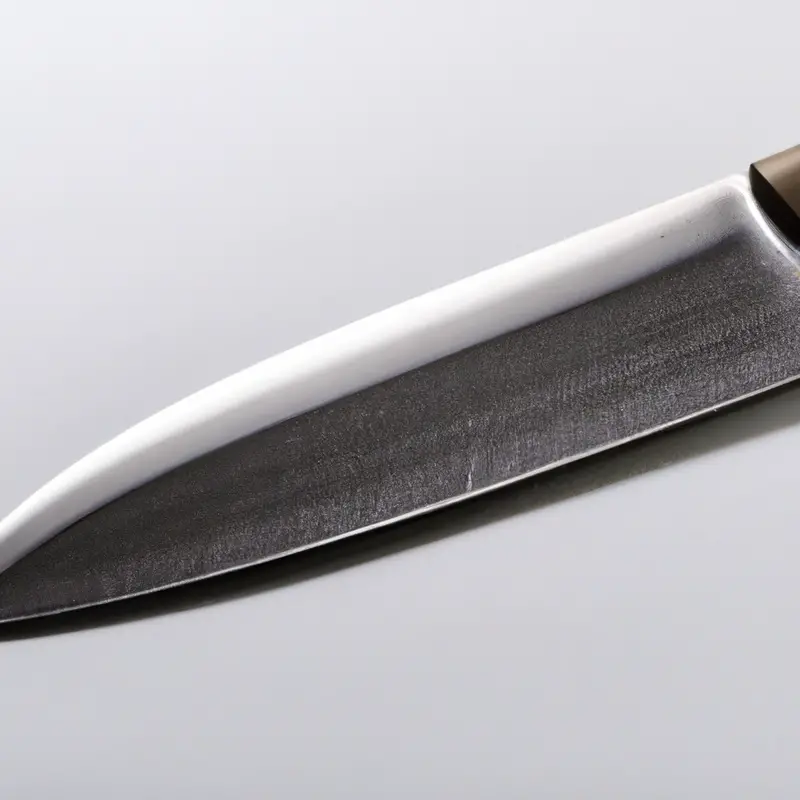
How to Choose the Right Size of Gyuto Knife for Your Culinary Needs
When choosing a Gyuto knife, it is essential to consider the size that would fit your culinary needs. To be precise, the size of a Gyuto knife blade ranges from 180mm to 270mm.
For light and detail-oriented tasks, such as mincing herbs, a smaller size around 180-210mm would be suitable.
Meanwhile, a 240-270mm blade will provide versatility for tasks like cutting large vegetables and meat. It is essential to assess your cooking style to determine the right size of the Gyuto knife that you need.
If you prefer smaller preparations and detail-oriented tasks, then a smaller blade would be a better fit.
On the other hand, larger tasks and larger group preparations would require a larger blade. Remember, the right size of the Gyuto knife highly depends on your preferences and what you tend to cook more frequently.
Hybrid Gyuto Knives: Understanding the Benefits and Uses
Hybrid Gyuto knives combine the traditional Japanese Gyuto knife with Western-style features, such as a curved handle and a thicker blade. The result is a versatile knife that can handle various cutting tasks in the kitchen.
The hybrid design provides the blade with excellent balance and a comfortable grip, making it easier for the user to control the knife.
Hybrid Gyuto knives offer the sharpness and precision of a Japanese knife, while the thicker blade provides durability and strength to handle tough cutting tasks such as cutting through bones or dense vegetables. The curved handle also offers a better grip for those who prefer a Western-style handle.
The benefits of a hybrid Gyuto knife include its ability to handle various cutting tasks, its durability and strength, and its balance and comfortable grip.
The knife is suitable for both professional chefs and home cooks who want a versatile and reliable knife in their culinary arsenal. Whether you’re slicing meat, chopping vegetables, or dicing herbs, a hybrid Gyuto knife can handle these tasks with ease.
Its sharpness and precision allow for a clean and accurate cut, while the thicker blade and curved handle provide the user with stability, control, and comfort.
A hybrid Gyuto knife is an excellent addition to any kitchen, providing the best of both worlds in terms of Japanese and Western-style knives. Its versatility, durability, and comfort make it a must-have tool for any cutting task.
Using a Gyuto Knife for Sushi and Sashimi: Techniques and Tips
Using a Gyuto knife for sushi and sashimi requires precision and skill. It is important to use a sharp blade to ensure clean and even cuts.
Begin by slicing the fish against the grain to achieve smoother cuts.
Use a pulling motion with the blade, rather than a pushing motion. This technique will prevent the fish from tearing and ensure that it retains its flavor and texture.
When slicing sushi rolls, use a gentle sawing motion to prevent the ingredients from shifting.
Hold the blade at a slight angle to achieve clean cuts. It is important to keep a damp towel nearby to clean the blade between cuts.
This will prevent any residue from building up and ensure that the blade remains sharp.
When selecting a Gyuto knife for sushi and sashimi, choose a longer blade for larger fish and a shorter blade for smaller fish. It is also important to choose a knife with a single bevel edge, which is designed specifically for cutting raw fish.
Following these techniques and tips will help you achieve perfect cuts of sushi and sashimi with your Gyuto knife.
How to Sharpen a Double-Bevel Gyuto Knife: Steps and Recommendations
To sharpen a double-bevel Gyuto knife, follow these steps:
- Gather the necessary tools: a sharpening stone, honing rod, and lubricating oil.
- Apply a few drops of lubricating oil onto the sharpening stone’s surface.
- Hold the knife at a 10 to 15-degree angle against the stone and run the blade back and forth across the stone in a sweeping motion.
- After several passes, flip the knife over and repeat the process on the other side.
- After sharpening, use the honing rod to realign the blade’s edges.
- Finally, rinse the knife with water and dry it before storing it properly.
For the best results, it is recommended to sharpen your Gyuto knife every few months or as soon as you notice the blade becoming dull. Using a high-quality sharpening stone and honing rod can help maintain the knife’s sharpness and prolong its lifespan.
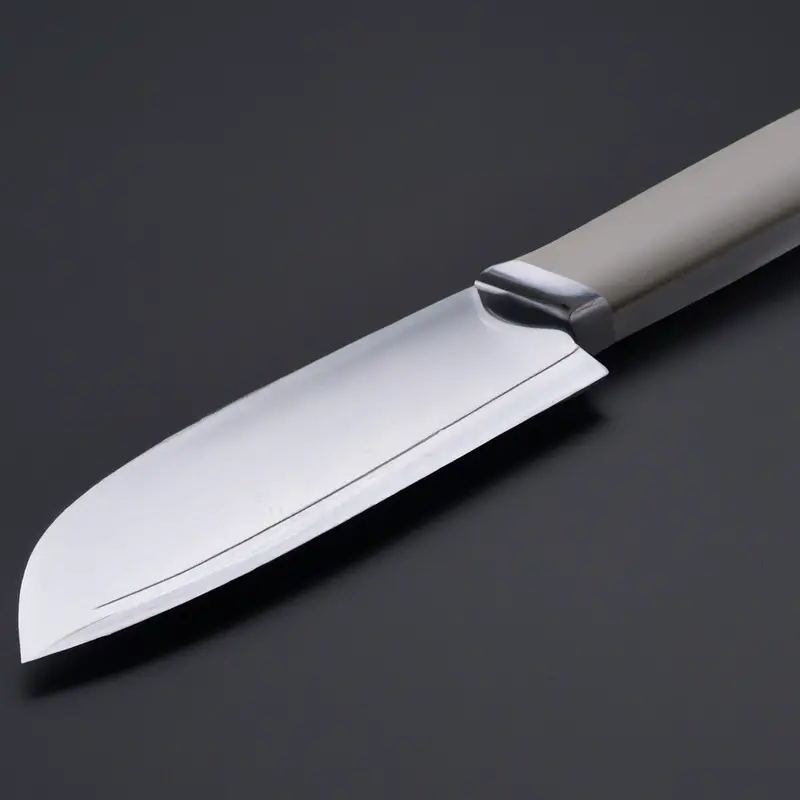
Perfecting Your Knife Skills: Tips from Expert Chefs for Using Gyuto Knives
To perfect your knife skills when using a Gyuto knife, you must follow certain tips from expert chefs. These tips include:
- Hold the knife correctly: Hold the knife with a relaxed grip, using your thumb and index finger to guide the blade.
- Keep the knife sharp: A sharp knife is essential for precision cuts, and you can regularly hone, sharpen, and maintain your knife to keep it sharp.
- Use the right cutting board: A sturdy cutting board, preferably made of wood or bamboo, is ideal for the Gyuto knife to prevent damaging the blade.
- Use the right technique for the right ingredient: Each ingredient has a specific cutting technique, such as the push-pull motion for slicing meat or the tap-chop motion for herbs.
- Practice makes perfect: Consistent practice and patience are key to mastering the art of using a Gyuto knife.
By following these tips, you can master the technique of using a Gyuto knife and achieve consistent and perfect cuts every time you cook!
How to Achieve Precision Cuts with a Gyuto Knife
To achieve precision cuts with a Gyuto knife, follow these steps:
- Begin with a sharp blade: A sharp blade is essential for making precise cuts. Ensure that your Gyuto knife is sharp before use.
- Use proper technique: Hold the knife with a firm grip and use a smooth slicing motion when cutting. Keep your fingers away from the blade to avoid injury.
- Cut against a cutting board with a non-slip surface: The cutting board should provide a stable base, ensuring that the Gyuto knife stays in place.
- Use the right amount of pressure: Apply the right amount of pressure to ensure that the blade makes consistent cuts through the food.
- Slice at an angle: For precision cuts, slicing at an angle is recommended. This technique ensures even and uniform cuts.
With these steps, you can achieve precision cuts with your Gyuto knife. Remember to practice often and follow proper safety guidelines when using sharp kitchen tools.
The Japanese Style of Using Gyuto Knives in the Kitchen
The Japanese style of using gyuto knives in the kitchen involves a combination of precision, efficiency, and respect for the ingredients. Japanese chefs often place a great emphasis on knife skills and consider it an essential part of their culinary education.
One key aspect of the Japanese style is the grip, which involves holding the handle with all fingers, including the index finger resting on top of the blade for stability and control.
The thumb is placed on the opposite side of the blade, allowing for a comfortable and secure grip. Japanese chefs also tend to use a more vertical cutting motion, keeping the blade perpendicular to the cutting board.
This technique allows for a more controlled and precise cut, especially when slicing thin pieces of fish or meat.
Additionally, Japanese chefs often use a pulling motion when cutting, rather than pushing the blade forward. This allows for a smoother and more controlled cut, and reduces the risk of slippage or injury.
Using the Japanese style of using gyuto knives not only results in beautiful cuts of meat and vegetables but also improves the overall culinary experience.
It requires practice, patience, and dedication, but the results are worth it.
Common Questions and Answers About Gyuto Knives and Cutting Techniques
Q: What is a Gyuto knife? A: A Gyuto knife is a Japanese-style chef’s knife that is versatile and typically used for slicing, dicing, and chopping a range of ingredients.
Q: What types of materials are used to make Gyuto knives?
A: Gyuto knives are typically made from high-carbon stainless steel, which allows the blade to hold a sharp edge for longer periods. The handle can be made from various materials like wood, resin, or composite materials.
Q: What should be considered when choosing a cutting board for use with a Gyuto knife?
A: It is essential to use a cutting board made from materials that won’t damage the blade’s edge. Some recommended materials are bamboo, end-grain wood, or composite materials.
Q: How do I properly maintain the sharpness of my Gyuto knife?
A: Sharpen your Gyuto knife regularly using a sharpening stone or honing steel. Keep the blade clean and dry, and don’t use it on hard surfaces like ceramic plates or glass cutting boards.
Q: What are the recommended cutting techniques for using a Gyuto knife?
A: The technique depends on the type of ingredient you are preparing. For slicing vegetables, use a back-and-forth sawing motion.
For chopping herbs, use a rocking motion.
For slicing meat, use a slicing motion with the blade’s length. Q: How do I choose the right size Gyuto knife for my needs?
A: Consider the size of the ingredient you typically work with.
A larger blade will make it easier to cut larger items, while a smaller blade is ideal for more detailed cutting work. Q: Can a Gyuto knife be used for cutting sushi and sashimi?
A: Gyuto knives can be used for cutting sushi and sashimi, but it is recommended to use a single-beveled Japanese knife for this specific purpose.
Q: What are common mistakes to avoid while using a Gyuto knife? A: Avoid using the blade on hard surfaces, using a dull blade, and using the wrong technique for the ingredient you are preparing.
Q: What advantages does a Gyuto knife have in the kitchen?
A: Gyuto knives are versatile, durable, and comfortable to use. The blade is sharp and durable, making it easier to prepare ingredients quickly and efficiently.
Q: How should I store and care for my Gyuto knife?
A: Store your Gyuto knife in a designated block or drawer away from other utensils. Clean it after use with water and mild dish soap, and dry it with a cloth.
Avoid using abrasive cleaners and don’t put it in the dishwasher.
Final Verdict
Mastering the recommended cutting techniques for a Gyuto knife is essential for achieving optimal performance in the kitchen. By following these techniques and focusing on proper form and grip, you can consistently create precise and uniform cuts with ease.
Remember to choose the right cutting board and maintain the sharpness of your knife for best results.
With practice and dedication, your Gyuto knife can become a powerful tool in your kitchen arsenal. Trust in the expertise presented here and take action to improve your cutting skills today.

